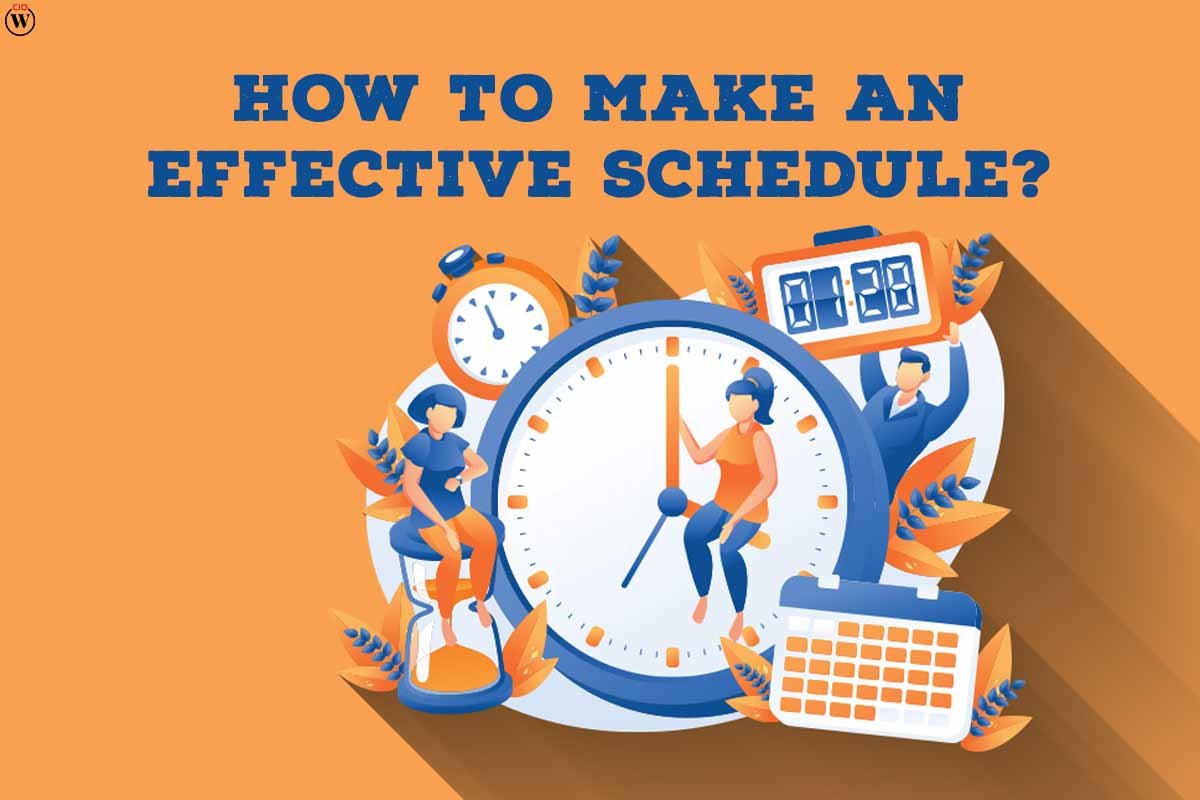There are distractions everywhere. You can’t avoid them. You might plan to Make an Effective Schedule for your laundry or go grocery shopping, but before you know it, you’ve spent more than four hours on the couch watching back-to-back episodes of your favorite show, completely lost in a different world as you put off your responsibilities.
It’s in our nature to waste time, and most people do it. Still, time is a very valuable resource, and you need to make sure you use it well. If you don’t, you might end up with a pile of dirty clothes and no food in the fridge.
Here are some tips for Make an Effective Schedule;
1. Divide Your Day
Start to Make an Effective Schedule by dividing each day into three parts: morning, afternoon, and evening.
At different times of the day, you’ll have more or less energy, and your schedule should take that into account. Here’s an easy way to show how a schedule should look:
Morning
Breakfast, workout, and work

Afternoon
Lunch\sAppointments
Answering emails
Shopping for food
Evening
Dinner Doing dishes
Doing the ironing
Most likely, your Make an Effective Schedule won’t look like the one above, but the idea is the same. When you start your day this way, you’ll have the willpower and motivation to do harder things. In the afternoon, you can take care of your most important tasks, and your last tasks are easy to do in the evening.
It’s up to you if you want to give each item a time frame, but outside of a business setting, we don’t think you should. It’s best to be a little flexible, and you shouldn’t put too much pressure on yourself to finish something you can’t. As long as you keep getting things done, you’re on the right track.
2. Make a promise as a group
You shouldn’t keep your personal and Make an Effective Schedule separate. Instead, you should put all of your plans in the same place. This will give you a full picture of what you need to get done in your personal life and at work over the next week.
You might worry about too much stuff. Your schedule might look a little confusing at first, but you can use color to tell which tasks are yours and which aren’t. Use blue for things that belong to you and red for things that are for work. No matter what color scheme you choose, make sure your categories are easy to tell apart.
If you don’t do this, you’ll have to switch back and forth between your personal and work calendars, which is time-consuming and confusing. Putting all of your color-coded tasks in one place will save you time and make things clear.
3. Give meetings less time
Many business people make the mistake of giving their meetings too much time.
They think that a short conversation will take 30 minutes and a long conversation will take an hour. This gives them too much free time Make an Effective Schedule. This problem is easy to solve and only needs a small change.

Your meetings should only last 10 to 15 minutes. Tell your business partners that they can ask for a longer session if they need more time to talk about something in depth. If not, you should trust that your estimates are accurate and that you can handle the problem in the time you set.
You should also leave a little extra time at the end of your workday in case something comes up. You can handle anything that comes up and still leave at a good time. It’s a small safety measure that will keep you from getting into trouble if your responsibilities overlap.
4. Break up bigger jobs into smaller ones
Some jobs are harder than things like answering emails or ironing clothes.
If you need to finish a project by a certain date, you should break it up into smaller parts to Make an Effective Schedule easier to keep track of. Here’s how that would look on your schedule:
Morning
Exercise routine for breakfast
Finish your research paper
Organize references
Make a list of works cited
Edit and check it twice
Submit for approval
Without the four steps listed below under “Finish Research Document,” you would have an idea for Make an Effective Schedule, what you needed to do but not a clear plan. Research shows that it is much better to write down each part. People put things off when they don’t know what to do.
5. Make the Changes You Need
When you’re done Make an Effective Schedule, give it a try for 30 days and see how you feel.
It might take a little time to get used to, so give it more than a week. If you find that one of these ideas doesn’t work for you, make the necessary changes.

Use the questions below as a checklist to see how well your plan is working:
Am I on time for meetings and appointments?
Am I able to do everything I need to do every day?
How much time do I have to drive from one place to another?
Am I using my free time in the best way possible?
Where can I make room to do other things?
Change your schedule based on what you learn as you answer the questions above & Make an Effective Schedule Soon, you’ll have a perfect schedule that lets you work and have fun without having to give up much.
FINAL THOUGHTS
It can feel like you are always moving from one responsibility to the next, never stopping. You’re picking up your dog from the kennel, making lunch for the next day, raking leaves and mowing the lawn, or taking your car to the shop. As you try to get everything done, you go from place to place and talk to different people.
Even though all of these responsibilities can be heavy, To Make an Effective Schedule will give you the help you need. If you use some of these tips, you’ll find it easy to get your tasks in order. Start by breaking up your day and then go from there. Before you know it, you’ll have a system for scheduling that works for you and helps you be more productive.








